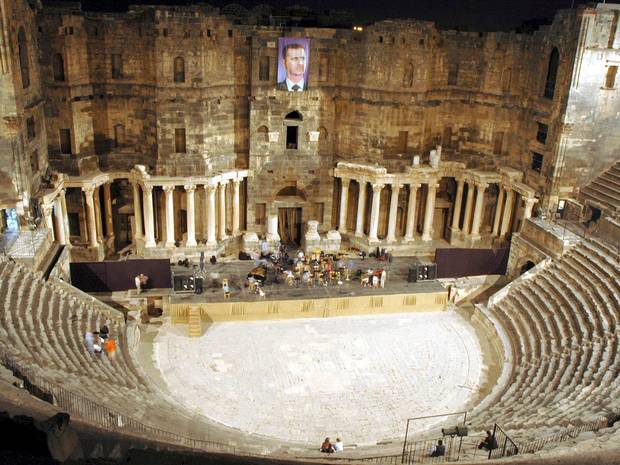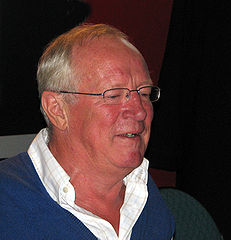We knew this was coming: Political troubles in Syria are causing damage to the country’s ancient treasures.
 As the inimitable foreign correspondent Robert Fisk, now working for The Independent but with experience at British newspapers including The Times and the Sunday Express, wrote in Sunday’s paper:
As the inimitable foreign correspondent Robert Fisk, now working for The Independent but with experience at British newspapers including The Times and the Sunday Express, wrote in Sunday’s paper:
The priceless treasures of Syria’s history – of Crusader castles, ancient mosques and churches, Roman mosaics, the renowned “Dead Cities” of the north and museums stuffed with antiquities – have fallen prey to looters and destruction by armed rebels and government militias as fighting envelops the country. While the monuments and museums of the two great cities of Damascus and Aleppo have so far largely been spared, reports from across Syria tell of irreparable damage to heritage sites that have no equal in the Middle East.
Even the magnificent castle of Krak des Chevaliers – described by Lawrence of Arabia as “perhaps the best preserved and most wholly admirable castle in the world” and which Saladin could not capture – has been shelled by the Syrian army, damaging the Crusader chapel inside.
Fisk’s article, headlined Syria’s Ancient Treasures Pulverised, goes on to detail some damage and the reasons why — e.g., armed rebel hiding behind ancient wall, thinking that the Syrian Army would not blast them, wrongly. They did.
He quotes Joanne Farchakh, “a Lebanese archaeologist who also investigated the destruction and plundering of Iraq’s historical treasures after 2003, and helped the Baghdad museum to reclaim some of its stolen artifacts,” calling the losses “catastrophic.” Then, she adds:
One of the problems is that for 10 years before the war, the Syrian regime established 25 cultural museums all over the country to encourage tourism and to keep valuable objects on these sites – many placed stone monuments in outside gardens, partly to prove that the regime was strong enough to protect them. Now the Homs museum has been looted – by rebels and by government militias, who knows? – and antique dealers are telling me that the markets of Jordan and Turkey are flooded with artifacts from Syria.
Fisk, who has lived in the Middle East for more than 30 years, primarily in Beirut, places these battles in a historical context, noting that it has all happened before so many times. He concludes by saying we need inventories of what’s in national museums and on ancient sites. A mild remedy, I’d say.
 Interpol issued an alert about Syria in May, calling for “vigilance of its 190 member countries as to the risk of illicit trafficking in cultural goods from Syria and neighbouring countries.” On July 27, the Director-General of UNESCO called for the protection of Aleppo, where fighting has been fierce.  Last month, the Association of Art Museum Directors issued a statement deploring the destruction of ancient sites in Northern Mali, a few days after articles in The New York Times about the situation there.
Interpol issued an alert about Syria in May, calling for “vigilance of its 190 member countries as to the risk of illicit trafficking in cultural goods from Syria and neighbouring countries.” On July 27, the Director-General of UNESCO called for the protection of Aleppo, where fighting has been fierce.  Last month, the Association of Art Museum Directors issued a statement deploring the destruction of ancient sites in Northern Mali, a few days after articles in The New York Times about the situation there.
Nothing about Syria as of this moment (guess they are waiting for confirmation of the damage by the Times), though AAMD did speak up when Iraqi and Egyptian heritage was under threat. Nothing on the site of the American Institute of Archaeologists either…or the World Monuments Fund.
Not that I believe that such statements — other than Interpol’s warning — have much effect. But they do focus attention on the issue, and that is usually good.
Photo Credits: Roman Theater in Borsa, courtesy of The Independent (top);Â Wikipedia (bottom)
